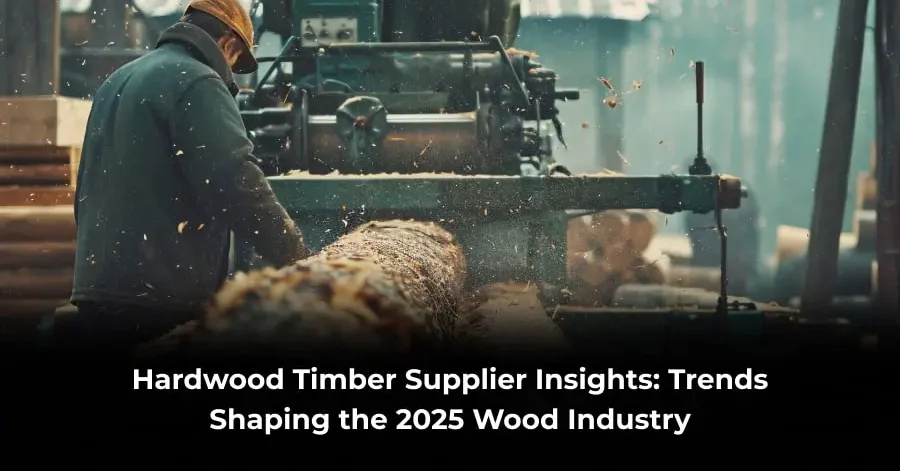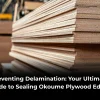The world of wood is timeless, yet it is constantly evolving. For craftsmen, architects, builders, and hobbyists, the relationship with wood is deeply personal. It’s about the feel of a smooth-sanded surface, the rich grain pattern that tells a story of growth, and the satisfaction of creating something that lasts. As we look toward 2025, the landscape for Hardwood Timber Suppliers is shifting in exciting and meaningful ways. It’s no longer just about supplying wood; it’s about fostering sustainability, embracing technology, and understanding the nuanced needs of every project, from a custom furniture piece to a large-scale architectural marvel. This deep dive explores the pivotal trends that forward-thinking Hardwood Timber Suppliers are adopting, trends that will define your sourcing experience and the very quality of your creations in the coming year.
1. The Digital Transformation: From Yard to Your Screen
Gone are the days of solely relying on physical visits to a timber yard. The modern woodworking supplies store is as much online as it is offline. What does this mean for you? This shift represents a fundamental change in how we connect with our materials. It’s about accessibility and making informed decisions without geographical constraints. The best Hardwood Timber Suppliers are now leveraging technology to bridge the gap between their extensive inventory and your creative vision, ensuring that distance is no longer a barrier to obtaining the perfect piece of wood.
- Virtual Inventory and Real-Time Availability: Leading Hardwood Timber Suppliers are investing in sophisticated online platforms where you can browse their entire stock. This saves immense time and effort, allowing you to check the availability of specific species, thicknesses, and quantities from your workshop. Imagine being able to plan a project at midnight, secure in the knowledge that the materials you need are in stock and can be reserved with a click. This efficiency is revolutionizing project timelines and workflow for small studios and large operations alike.
- High-Resolution Wood Grade Images: Perhaps the most significant digital advancement is the use of detailed wood grade images. Choosing a piece of wood is a visual and tactile process. High-quality, accurate wood grade images allow you to assess the grain, color variation, knotting, and overall character of a specific board before you commit to purchasing. This transparency builds trust and ensures you get exactly what you envision for your project, reducing uncertainty and waste. A reliable supplier will provide multiple wood grade images for their premium stock. It’s the closest you can get to running your hand over the grain without being there in person, providing peace of mind and elevating the entire purchasing experience.
This digital shift is making the procurement process more efficient and client-focused, ensuring that your local woodworking supplies store can serve you better, whether you’re down the street or across the country.
2. The Unstoppable Rise of Sustainability and Certified Sourcing
The consciousness around the source of our materials has never been higher. In 2025, sustainability isn’t a buzzword; it’s a baseline expectation. Discerning clients and creators are actively seeking wood that comes with a story of responsible stewardship. This trend is driven by a collective understanding that we are custodians of our natural resources. The choices made by Hardwood Timber Suppliers today directly impact the health of our forests for tomorrow, making ethical sourcing a core part of the industry’s mission.
Hardwood Timber Suppliers are responding by prioritizing timber certified by organizations like the Forest Stewardship Council (FSC) and the Programme for the Endorsement of Forest Certification (PEFC). This certification is a promise—a promise that the wood was harvested legally, from forests that are managed to preserve biodiversity, benefit local communities, and ensure the resource is available for generations to come. When you source from a supplier committed to these practices, your project carries a legacy of environmental respect. This isn’t just about feeling good; it’s about adding a layer of value and marketability to your finished work, appealing to a growing demographic of eco-conscious consumers.
3. Niche and Underutilized Species Gaining Prominence
While oak, maple, and walnut will always have their place, 2025 is seeing a surge in the popularity of lesser-known species. This trend is driven by a desire for uniqueness, cost-effectiveness, and sustainable alternatives to overharvested woods. This is where species like okoume wood shine. Exploring these alternatives opens up a new palette of colors, grains, and working properties, allowing for truly distinctive creations that stand out in a market of common materials. It’s a creative and practical movement that encourages innovation in design and technique.
Okoume wood, often referred to as “Gaboon,” is a superb example. Prized for its:
- Lightweight: It’s one of the lightest hardwoods available, making it ideal for applications where weight is a concern, such as in marine construction or theatrical set building.
- Excellent Stability: It has minimal tendency to warp or shrink, which is a critical characteristic for any project requiring long-term dimensional integrity.
- Fine, Even Texture: Its straight grain and smooth texture make it a dream for veneering, plywood, and boat building, accepting finishes and adhesives uniformly.
A knowledgeable woodworking supplies store will be expanding its inventory to include such species, offering clients more creative and practical options. Sourcing okoume wood from a reputable supplier ensures you get a consistent, high-quality product perfect for specific applications like marine projects and high-end decorative veneers. By choosing okoume wood, you are not only selecting a versatile material but also often opting for a species that grows relatively quickly, contributing to a more sustainable harvesting cycle.
4. The “Story” of the Wood: Provenance and Authenticity
People crave connection, even with the materials they use. There is a growing appreciation for the “story” behind the wood. Where did it grow? How was it harvested? Who milled it? Hardwood Timber Suppliers are becoming storytellers, providing provenance that adds intangible value to the timber. This narrative transforms a simple plank into a material with heritage and soul, a quality that clients and end-users can feel and appreciate. In an age of mass production, the story behind a handmade piece is its most powerful differentiator.
This could mean highlighting wood salvaged from urban trees that would otherwise be chipped, or timber from a specific region known for its unique growing conditions that impart special characteristics to the grain. A table made from a reclaimed urban maple has a history and a connection to a community. A guitar made from ethically sourced okoume wood carries with it the story of the African rainforest. These stories resonate deeply, turning a functional object into a conversation piece and an heirloom. This trend empowers creators to offer more than just a product; they offer a piece of a narrative, which is an incredibly powerful value proposition.
5. Precision and Customization: Beyond the Standard Board Foot
The one-size-fits-all approach is fading. Whether you’re a large-scale manufacturer or a solo woodworker, your needs are specific. Suppliers are adapting by offering more customized milling services. This shift acknowledges that time is the most valuable resource in any workshop. By offloading the initial, labor-intensive milling stages to the Hardwood Timber Suppliers, craftspeople can dedicate more energy to the detailed, creative aspects of their work, enhancing both productivity and the quality of the final product.
Instead of just offering rough-sawn lumber, a modern woodworking supplies store or Hardwood Timber Suppliers will often provide services like:
- Pre-dimensioning: Providing wood already milled to your required thickness, width, and length, ready for immediate use in your project.
- Custom Milling: Creating specific profiles, turning squares, or other custom shapes based on your technical drawings or specifications.
- KILN-Drying to Specific Moisture Content: Ensuring the wood is perfectly stable and ready for your local climate, which is paramount for preventing future wood movement and ensuring the longevity of your creation.
This level of service saves you time, reduces waste in your own shop, and allows you to start the creative process faster. It’s a partnership where the supplier acts as an extension of your workshop, enabling you to achieve a level of precision and efficiency that was previously difficult to attain.
Also Read: What Certifications Should I Look for in a Reliable Hardwood Timber Supplier?
Spotlight on AEW Woods: A Partner in Quality and Service
In a market shaped by these trends, finding a supplier that embodies them all is key. This is where companies like AEW Woods establish themselves as industry leaders. AEW Woods has built a reputation not just as a woodworking supplies store, but as a true partner to woodworkers. They demonstrate a clear understanding that the journey of a masterpiece begins long before the first cut is made; it begins with the quality and suitability of the raw material.
They understand that your project’s success starts with the quality of your materials. By combining a vast and well-curated inventory with a commitment to customer education and service, AEW Woods ensures that every client finds the perfect wood for their needs. Their focus on providing detailed wood grade images and information on species like okoume wood empowers you to make informed decisions. When you partner with a supplier like AEW Woods, you are tapping into a deep well of expertise and a genuine passion for the craft, ensuring that the trends of 2025 are not just concepts, but a reality you can build with. Their approach seamlessly integrates the digital with the personal, offering high-tech tools like detailed wood grade images while maintaining the knowledgeable, human support that is so vital.
Conclusion
The wood industry in 2025 is dynamic, driven by a powerful fusion of tradition and innovation. The role of the Hardwood Timber Suppliers has expanded into that of a curator, a technologist, and a sustainability partner. The trends are clear: a seamless digital experience with the aid of wood grade images, an unwavering commitment to the planet, the celebration of unique species like okoume wood, and a demand for personalized service and material storytelling. By understanding these trends and aligning with suppliers who embody them, such as AEW Woods, you position yourself at the forefront of the craft. You gain access to superior materials, invaluable expertise, and the confidence that the wood you build with is not only beautiful and functional but also responsible. The future of woodworking is bright, and it is being built one carefully sourced, expertly crafted board at a time.
Frequently Asked Questions (FAQs)
- What is the biggest factor affecting hardwood prices and availability in 2025?
Global logistics, sustainable harvesting regulations, and climate are the primary drivers. Building a relationship with a reliable supplier helps navigate these changes. - How important are “wood grade images” when ordering online?
Crucial. They act as your digital inspection, allowing you to judge grain and character. Always choose suppliers who provide clear wood grade images. - I’m building a canoe. Why is “okoume wood” so highly recommended?
Okoume wood is exceptionally lightweight, stable, and resistant to warping, making it perfect for marine applications like canoes and boats. - What should I look for in a reliable hardwood timber supplier?
Seek a supplier with a strong reputation, transparent sourcing (like FSC certification), a user-friendly website with wood grade images, and knowledgeable staff. - Can a good woodworking supplies store help me choose the right wood?
Yes. A great woodworking supplies store offers expert guidance on the best species for your project’s budget, aesthetics, and tooling.






